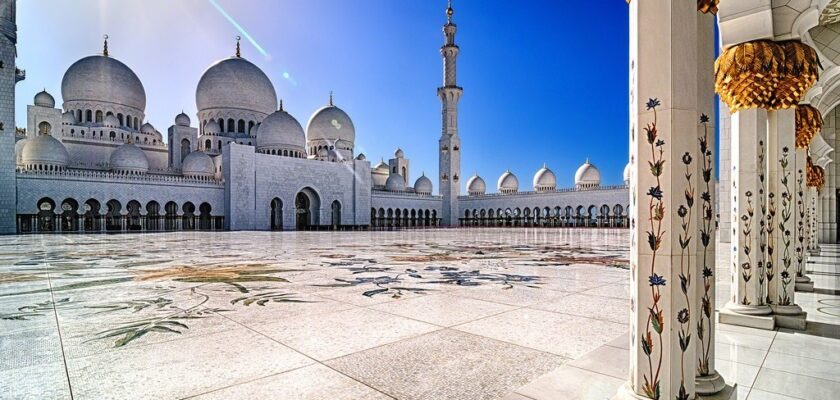Sheikh Zayed Grand Mosque
Sheikh Zayed Grand Mosque is one of the six largest mosques in the world. It is located in Abu Dhabi, the capital of the United Arab Emirates. It is named after Sheikh Zayd ibn Sultan al-Nahyan, the founder and first president of the United Arab Emirates, who is buried nearby. The mosque was officially opened in the month of Ramadan in 2007.
.The Sheikh Zayed Mosque, along with the Jumeirah Mosque in Dubai, is open to everyone (not just Muslims). The Ministry of Tourism announced that tours of the mosque have been available to Muslims and non-Muslims since mid-March 2008.
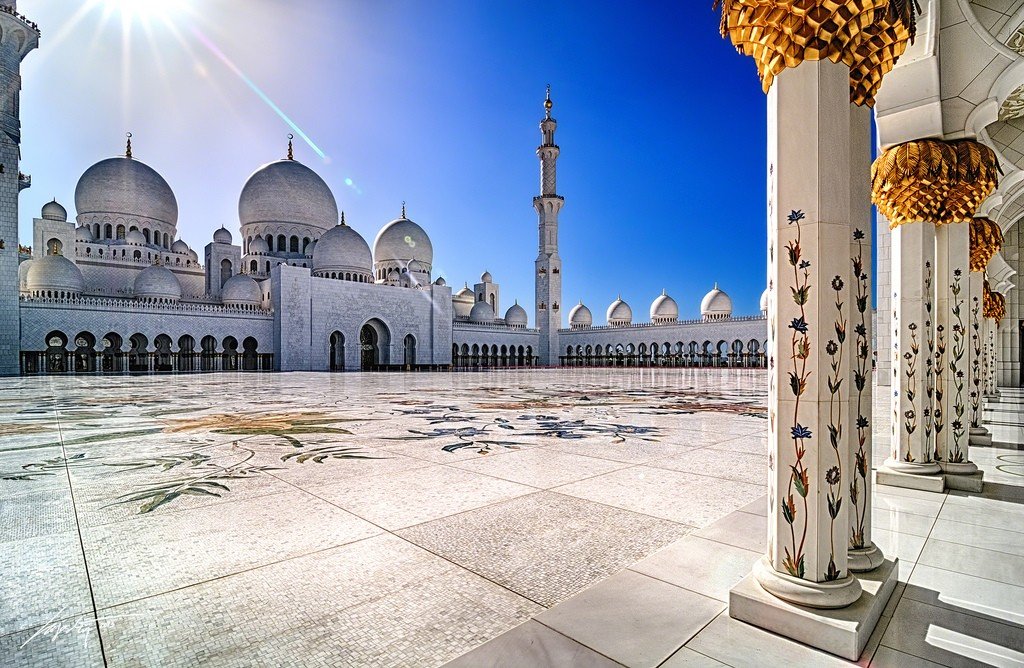
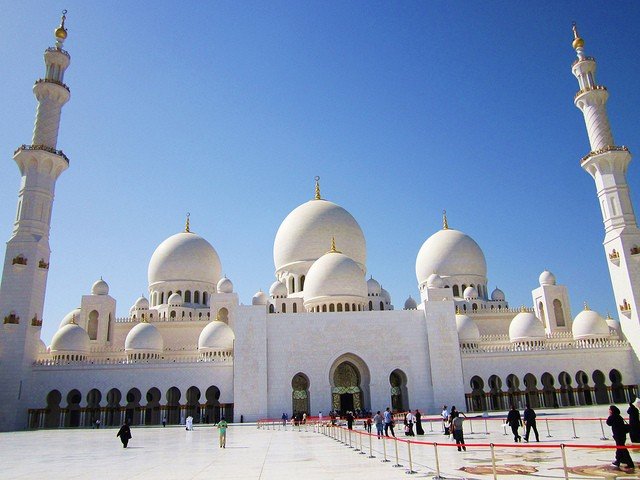
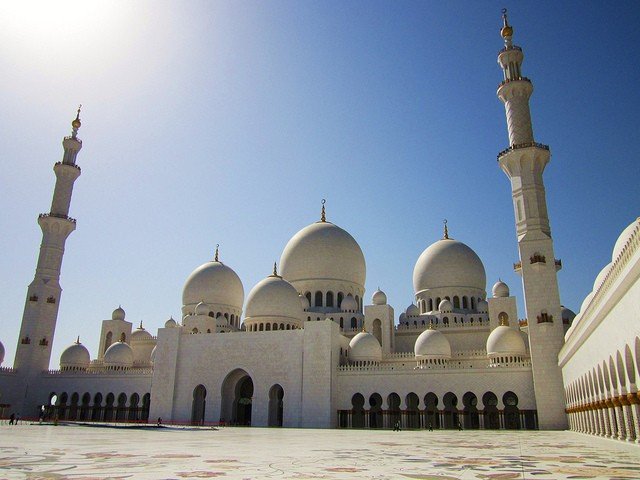
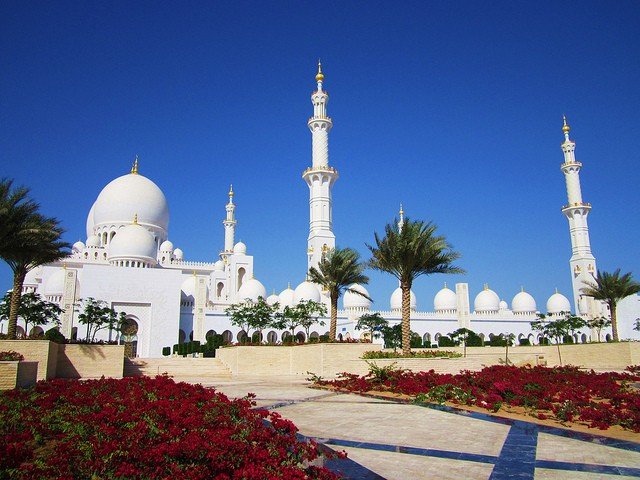
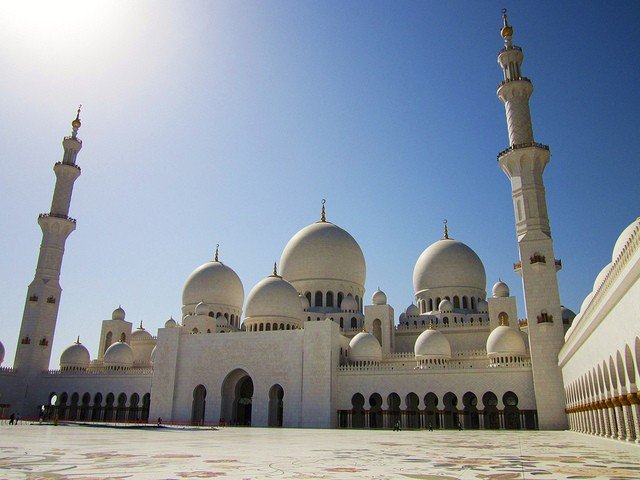
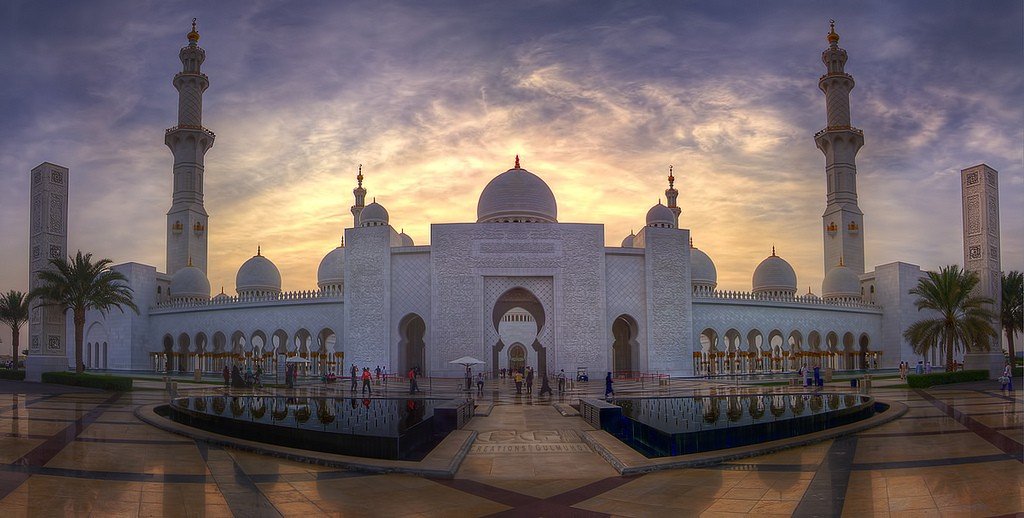
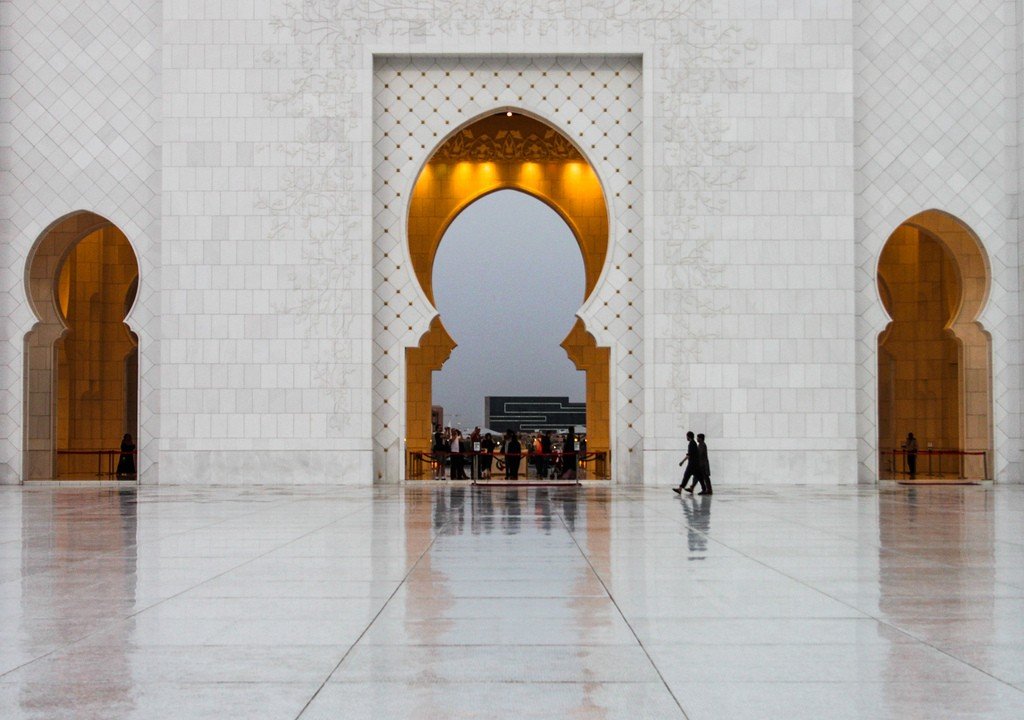
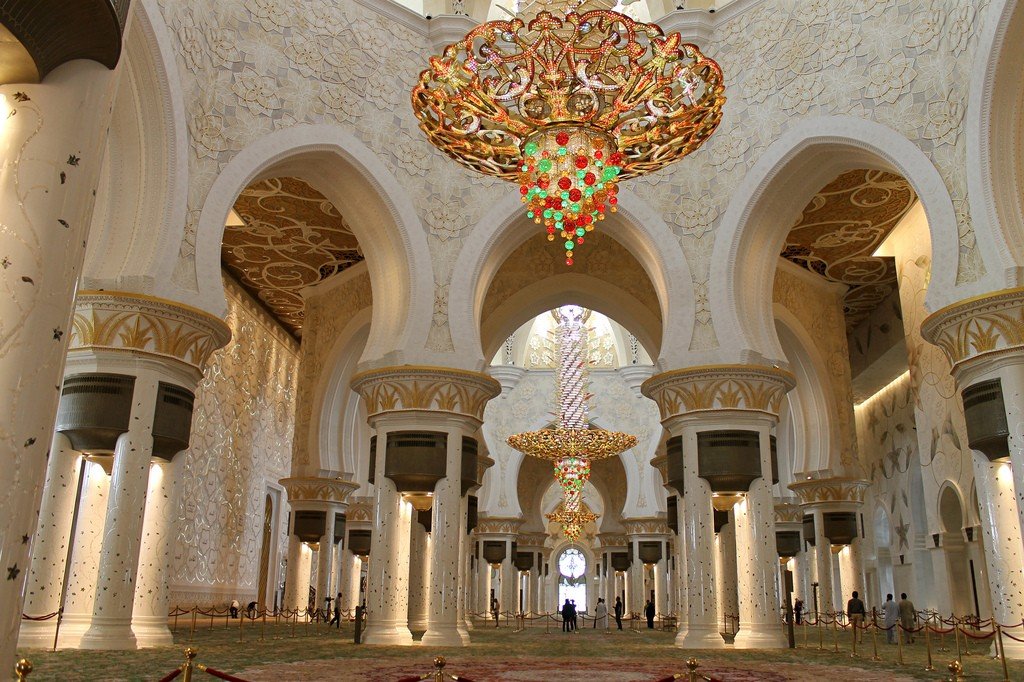
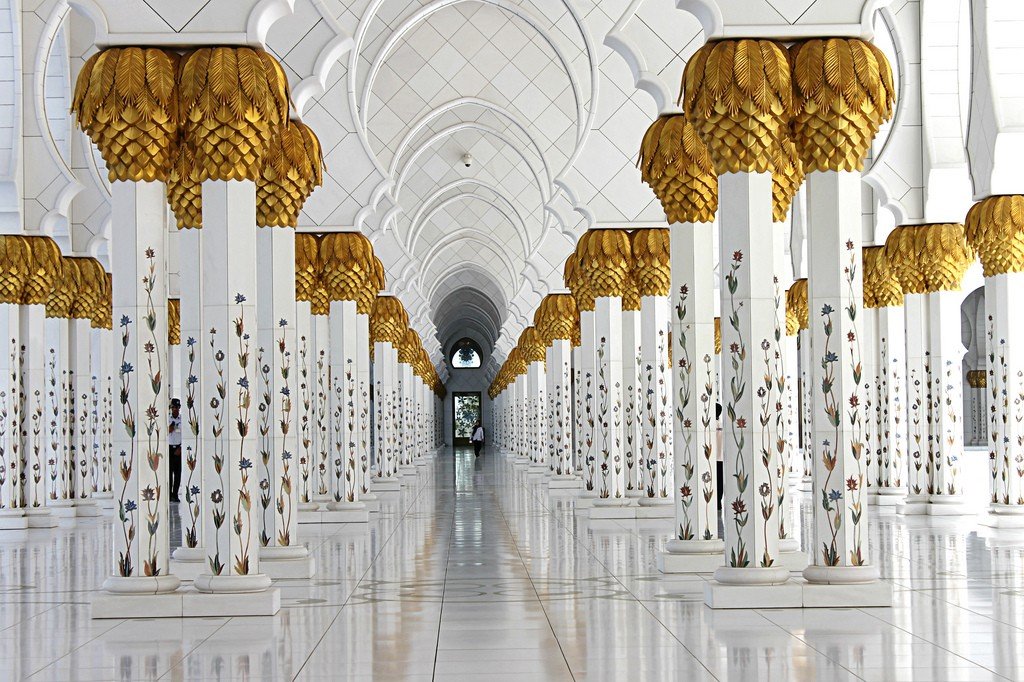
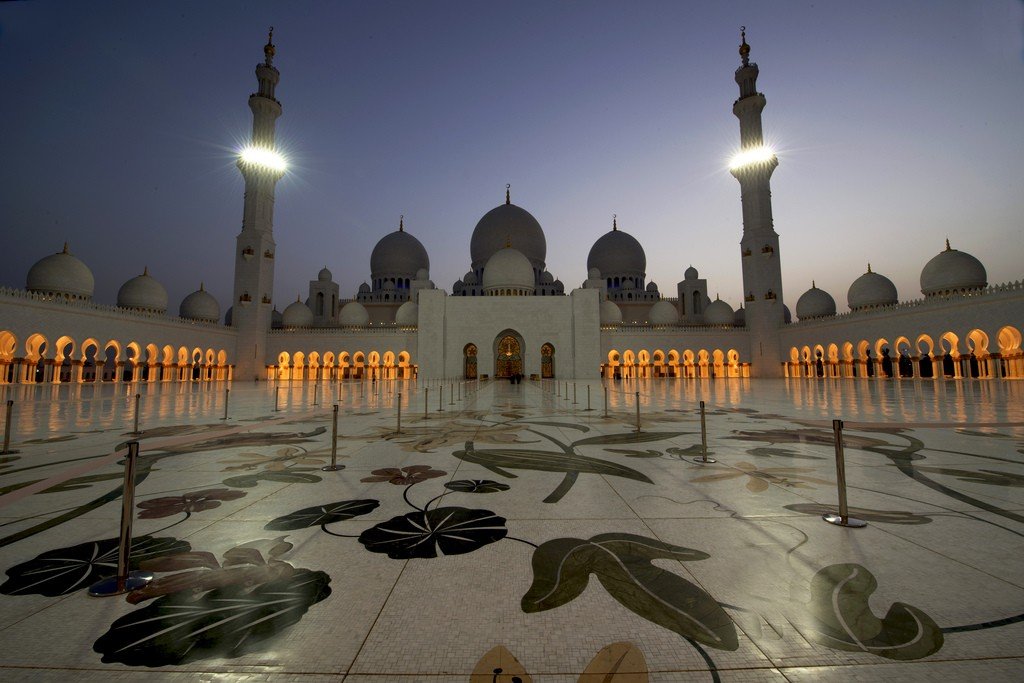
History of construction
The idea for the Mosque was originally announced in the late 1980s. However, the final planning, design, and construction site was not approved until the mid-1990s.
The construction start date was November 5, 1996, but after the initial phase of work, construction stagnated, with various stories of money circulating, and disagreements between the contractors and the Abu Dhabi Department of Public Works. Halcrow took over construction supervision in October 2001 and the main shell of the mosque was completed by May 2002. The mosque was finally completed in late 2007
.The design and construction was a collaborative effort between people from many countries: including Austria (Swarovski crystals in the chandeliers), China, Germany (chandeliers), Greece, India, Iran, Italy (glass), Morocco, New Zealand, Turkey, United Arab Emirates (UAE), United Kingdom ( UK). More than 3,000 workers and 38 contractors were involved in the construction project. The materials used include ceramics, crystals, gold, marble, semi-precious stones, and stone.
.Architecture
The Sheikh Zayed Grand Mosque is famous for its many unique features: the interior design of the white Italian marble prayer halls is inlaid with floral patterns of gold and glass mosaics, semi-precious stones and crystals.
.The mosque can accommodate 40,000 worshippers at a time. The main prayer hall can accommodate 7,000 worshippers. 22729 in the open courtyard, 7126 in the main prayer hall, 1960 in the open prayer hall, 980 in the open prayer hall women’s section, 682 in the main prayer lobby, 784 in the main vestibule.
.Four minarets stand at the four corners of the mosque, which rise approximately 107 meters. The outer row of the main building is covered by 82 domes. The domes are decorated with white marble and their interior artwork is also made of marble. The inner courtyard is lined with colored marble and is approximately 17400 m².
.The total area is 22412 m² (comparable to the area of about 5 soccer fields). The courtyard is about 17000 m² in area. The area of the reflecting pools surrounding the courtyard is 7874 m².
.
The main hall is also home to the world’s largest hand-woven carpet. The carpet was woven in Iran to a design by Iranian artist Ali Khaleeghi. It was worked on by 1200 artisans over a period of 2 years. The 5627 m² carpet, which used 35 tons of wool and 12 tons of cotton, costs about $8.2 million. There are 2,268,000 knots in the carpet’s structure.
.The mosque has about 1,000 columns in the outer area, decorated with more than 20,000 marble panels, incrusted with semi-precious stones including abalone shells, amethyst, lapis lazuli, mother-of-pearl, red agate. The 96 columns in the main prayer hall are decorated with mother-of-pearl.
.The lighting system was designed by architects Jonathon Speirs and Maer, taking into account the phases of the moon. The main glass door of the mosque is astonishing in its size: 12.2 m high, 7 m wide, weighing about 2.2 tons.
.In the halls of the mosque hung seven chandeliers made in Germany, decorated with gold leaf and Swarovski crystals made in Austria. The mosque’s main chandelier remained the largest in the world (10 meters in diameter, 15 meters high, weighing about 12 tons) until June 26, 2010, when an even larger one was installed in neighboring Qatar. Nevertheless, it remains the world’s largest chandelier installed in a mosque.
>The Qibla wall, on which the 99 names (qualities) of Allah in traditional Kufi calligraphy are described in gold and glass mosaics, is illuminated by thin fiber optic lighting integrated into the design.
.The mosque is surrounded by artificial lakes and canals with a total area of 7,874 m², decorated with dark tiles, in which the illuminated white temple is beautifully reflected in the evening.
.Tourist Information
Sheikh Zayed Mosque is open to the public daily from 09:00 to 12:00, except Friday. Entrance is free of charge.
.Visitors should wear conservative, loose-fitting, long-sleeved clothing, long skirts and pants, women should have a headscarf to cover their heads (provided at the entrance). Shoes must be removed before entering.
.Visitors are asked to stay only in the authorized areas of the mosque, not to touch the Koran and other architectural elements inside the prayer hall, smoking and eating are prohibited.
.